Japanese candles—known as warousoku (和ろうそく)—are more than just a source of light. Entirely handmade, crafted from plant-based wax, and rooted in centuries-old tradition, they offer a calming presence and a glimpse into Japan’s artisanal history.
Let’s explore what makes these traditional Japanese candles so special, including their history, natural materials, and how they’re crafted.

Today’s topic is Warousoku (Japanese candles).
Enjoy!
A Glimpse into History: When Did Japanese Candles Begin?

The first candles in Japan were introduced during the Nara period (710–794), arriving from China along with Buddhism. These early candles were made from beeswax, known as mitsu-rō, produced by honeybees to build hexagonal hives. The wax was collected, melted down, and shaped into candle blocks.
However, after Japan ended diplomatic missions to China in the late Heian period (around the 9th century), imported beeswax became scarce. This sparked the development of Japan’s own candle-making techniques using local resources.

The earliest mention of Japanese-style candles made from plant-based wax appears in the historical text Taiheiki (written around 1375, during the Muromachi period). This marked the beginning of the warousoku tradition.
What Are Japanese Candles Made From?
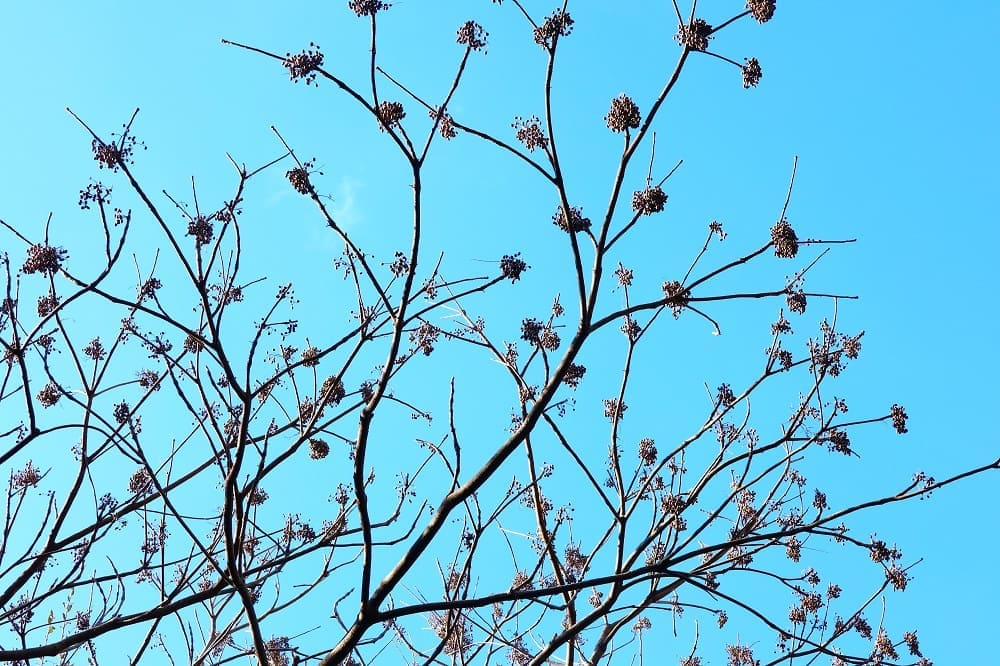
Unlike modern candles made with paraffin or animal fats, traditional Japanese candles use wood wax (mokurou). This wax is extracted from the seeds of the hazewood tree (haze)—a member of the sumac family.

In autumn, the fruits of the haze tree turn brown.
When sunlight hits them, they shine golden and look absolutely beautiful.

Every time I see haze fruits, I feel like trying my hand at making traditional Japanese candles!
The process is sustainable and 100% plant-based. In fact, today’s artisans often experiment with other natural waxes like:
| Soy wax | (from soybeans) |
| Rice bran wax | (from rice husks) |
| Beeswax | (still used for luxury candles) |
| Whale oil wax | (used in the past, no longer common) |
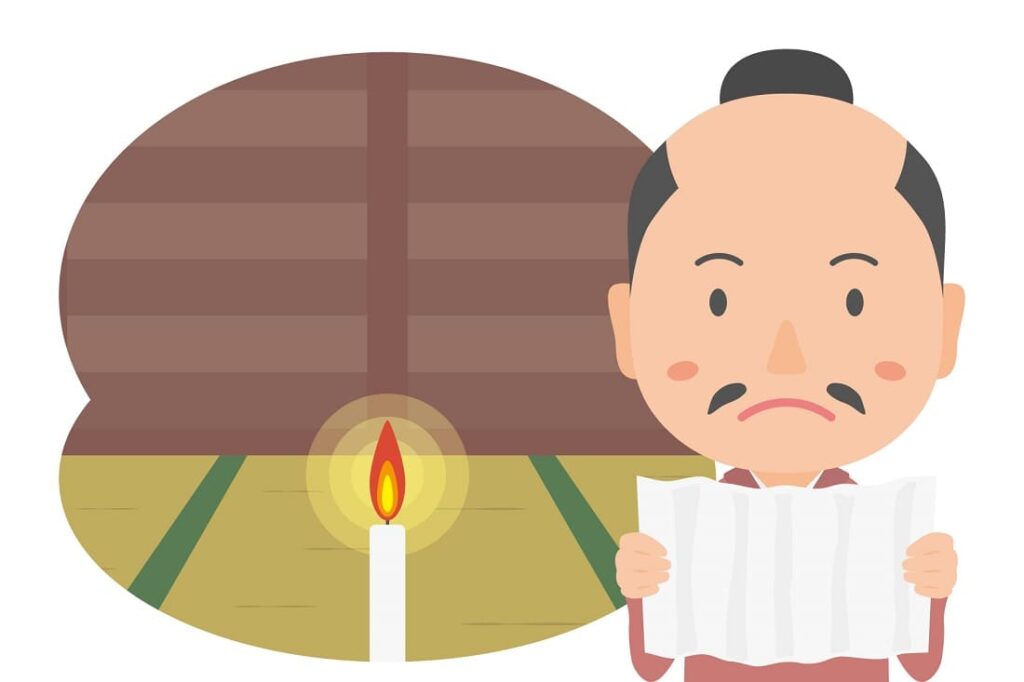
Because of the scarcity of ingredients and the labor involved, Japanese candles were once a luxury item reserved for the imperial court, nobility, and select temples. Even in the Edo period, they remained high-end goods enjoyed by samurai and wealthy merchants.

They say that a lot of traditional Japanese candles were used in the Yoshiwara red-light district.
Unique Features of Japanese Candles
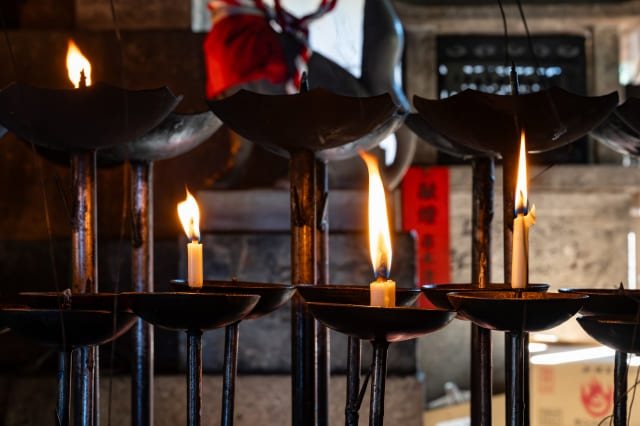
So, why are Japanese candles still cherished today?
Here are a few of their standout features:
| Clean burning | Made from plant-based wax, they produce little soot or smoke. |
| Mild scent | A soft, natural aroma from the wax adds a calming touch. |
| Easy cleanup | Any soot that does appear is dry and can be wiped off easily. |
| Stable flame | Their hollow core allows air to flow through the wick, helping the flame resist wind. |
| Soothing flicker | Even in still air, the flame dances gently, creating a serene and spiritual ambiance. |
Their warm, flickering light is said to have healing effects, making them popular not only for temples or ceremonies but also as décor for meditation and relaxation.
How Japanese Candles Are Made – Step by Step
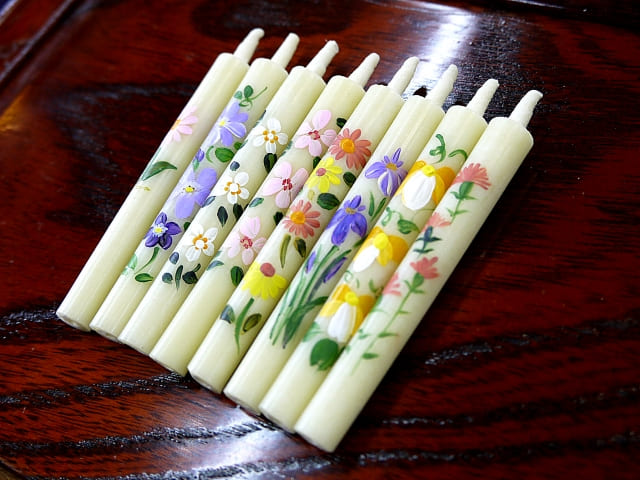
Creating a traditional Japanese candle is a labor of love. Here’s how artisans do it:
- Start the wick: Wrap washi paper and a soft grass pith (called toushin) around a bamboo or wooden stick to create the wick.
- Dip into wax: Dip the wick into melted wood wax, dry it, and repeat several times—sometimes dozens—to build up thickness.
- Mix the wax: Melt wood wax and stir it gently as it cools. The color will turn whitish as it solidifies.
- Air-dry: Allow the candles to air-dry naturally.
- Hand layer wax: Scoop warm wax with bare hands and layer it onto the wick, letting it dry between coats. Repeat several times.
- Smooth and shape: Roll multiple candles in your palms while applying a final coat of high-quality wax.
- Trim the top: Use a heated knife to cut the top and expose the wick inside.
- Finish the base: Trim the bottom for a clean, even look. Then gently remove the candle from the stick—and it’s ready to light!

Process 7 is extremely tough—it’s said that without experience, you can easily burn your hands.

I don’t think I can do this…
A Japanese Candle with Meaning
Japanese candles are more than decoration—they are living art forms. The craftsmanship, natural materials, and centuries of tradition give them a soul that mass-produced candles simply don’t have.
Used in temples, tea ceremonies, or your own peaceful evening at home, warousoku bring a unique sense of calm, light, and connection to Japanese culture.

If you are interested in Japanese culture, you may love these games!
Let’s play!

Yes! Let’s play!



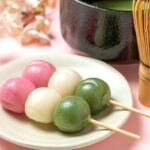
Comments